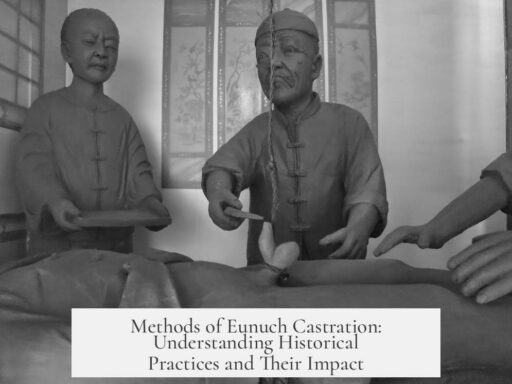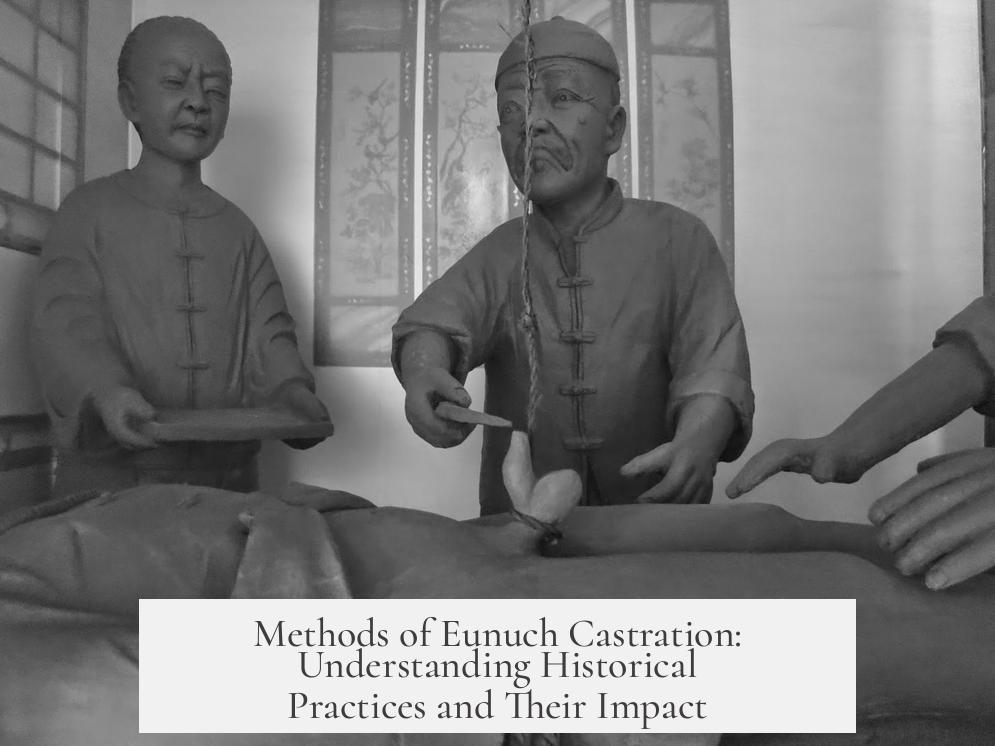Eunuchs were castrated using methods that vary widely depending on the culture, time period, and intended purpose. The most documented techniques include complete removal of penis and testicles, removal of testicles alone, or occasionally just the penis. These procedures involved careful preparation, control of bleeding, and post-operative care. Key examples come from Chinese and Ottoman practice, as well as historical castrati in Italy and punishments in some Islamic contexts.
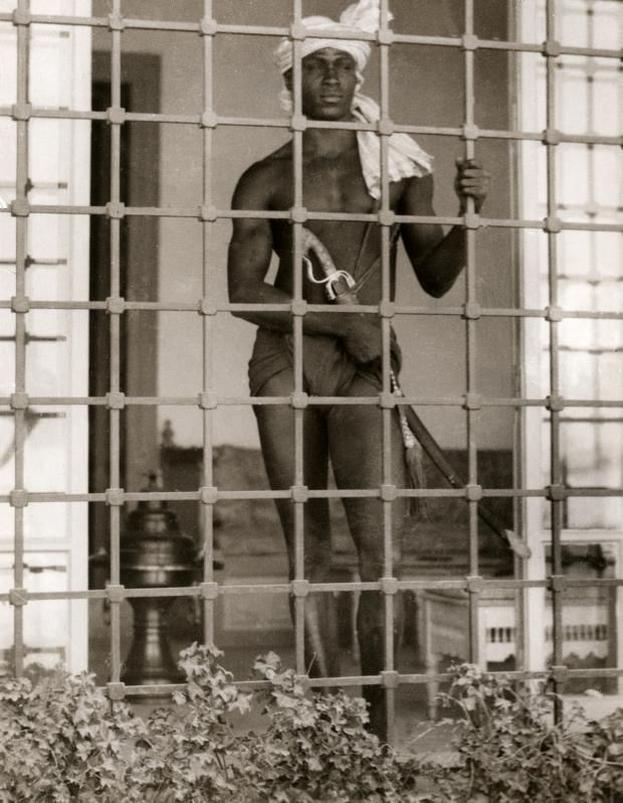
The most thorough form, often called the “clean-cut” method, removes both penis and testicles in a swift, single operation. This was standard among Ottoman black eunuchs and Chinese palace eunuchs. The Chinese surgical procedure, recorded in detail by G. C. Stent, showcases a rigorous approach to limit pain and infection.
In the Chinese method, the candidate lies on a warm bed while restrained by three assistants. Compression bandages are applied tightly around the lower belly and thighs to minimize bleeding. The genital area is then bathed three times with hot pepper-water, which acted as a sterilizing and desensitizing agent.
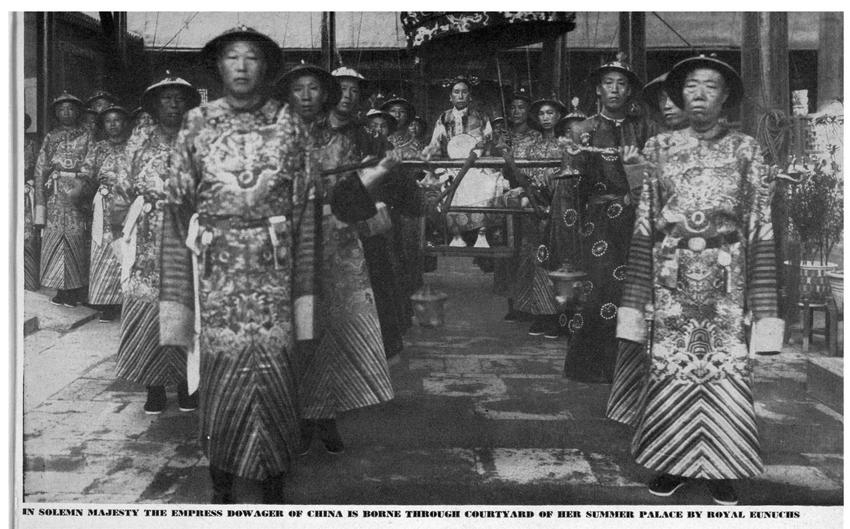
A sharp, curved knife resembling a sickle is used to sever the penis and testicles in one clean cut as close to the body as possible. After removal, a small pewter needle or spigot is inserted into the urethral opening to maintain urine flow and prevent the wound from closing. The wound is dressed with cold water-soaked paper and securely bandaged.
The patient must remain supported and ambulatory for two to three hours after the operation. No fluid intake is permitted for three days afterward, causing intense thirst and pain. On the third day, the bandage and spigot are removed, allowing urine to flow freely. Failure to urinate is typically fatal, as it leads to swelling and blockage of the urinary tract.
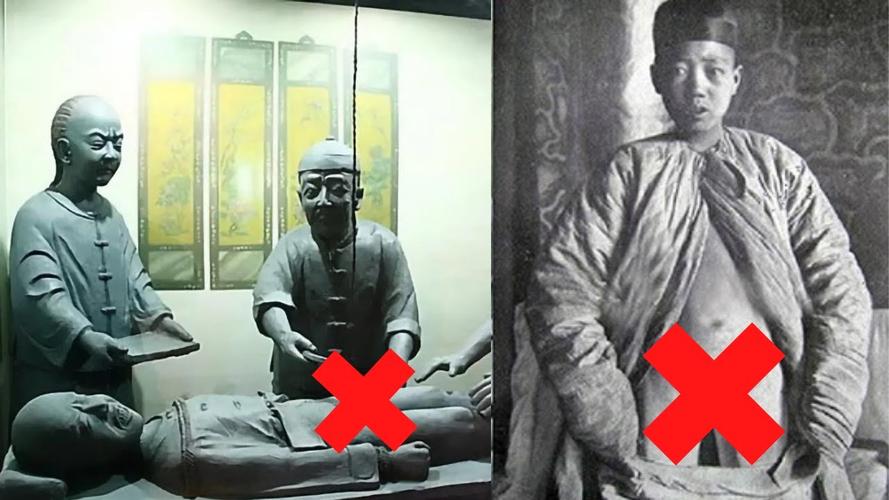
The urethra heals by forming an external opening, or stoma, while the scrotal area closes with scar tissue. This protocol demonstrates a practical balance of brutality and medical care, reflecting the significant role eunuchs played in imperial China and the Ottoman court.
Another common form of castration involves removing only the testicles. This method appears throughout history and cultures, often for servant or slave control, as well as to produce certain singers known as castrati in Italy. Three main techniques were used:
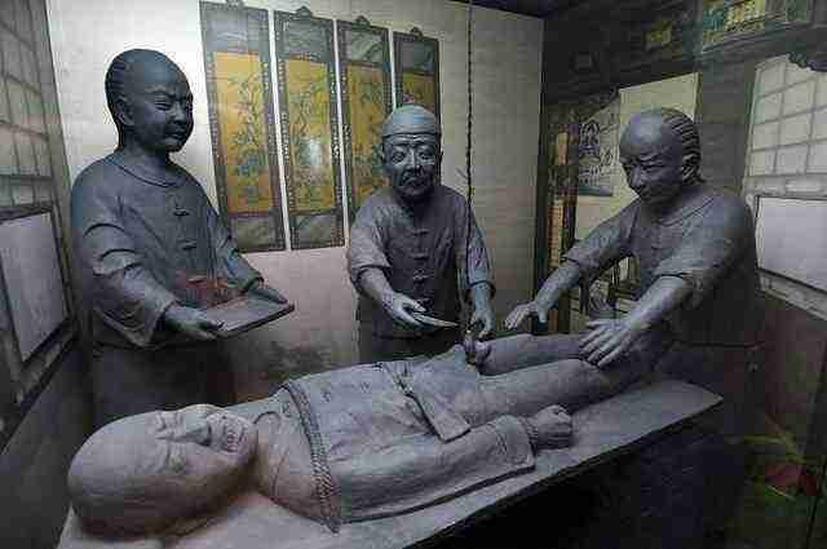
- Crushing the testes inside the scrotum without cutting: This method likely induced infertility by destroying the testes’ function without breaking skin, reported among Assyrians, Byzantines, and castrati productions.
- Incision to remove testes: Cutting open the scrotum and extracting the testicles was a more delicate procedure used in Italy for castrati, requiring surgical skill to avoid fatal infection.
- Complete scrotum removal including testes: Used commonly in animal castration, this involved excising the entire scrotal sac and testes, sometimes with heated instruments to cauterize vessels and reduce bleeding.
Occasionally, some eunuchs had only the penis removed while the testes remained intact. This was rare and mainly motivated by punitive intent within some Islamic contexts. It lacked practical applications such as infertility or hormonal changes, suggesting it served as a form of corporal punishment or humiliation.
| Method | Description | Examples/Usage |
|---|---|---|
| Complete removal (penis + testes) | Single swift removal with knife, ligatures to control bleeding, pepper-water sterilization, urethral spigot to maintain urine flow | Chinese palace eunuchs, Ottoman black eunuchs |
| Testes removal only | Crushing testes internally; incision and removal; full scrotal excision; some use of cauterization | Italian castrati, Assyrians, Byzantine Empire, livestock castration |
| Penis removal only | Removal of penis without affecting testes; minimal known practical use | Some Islamic eunuchs (punitive cases) |
These methods reflect the cultural norms and medical knowledge of their times. Clean-cut castration demanded careful hygiene and pain control, often supported by pharmacological or ritual means. Testes-only approaches balanced risks against objectives like infertility or voice preservation. The rare penis-only removal served more as a penalty than a functional alteration.
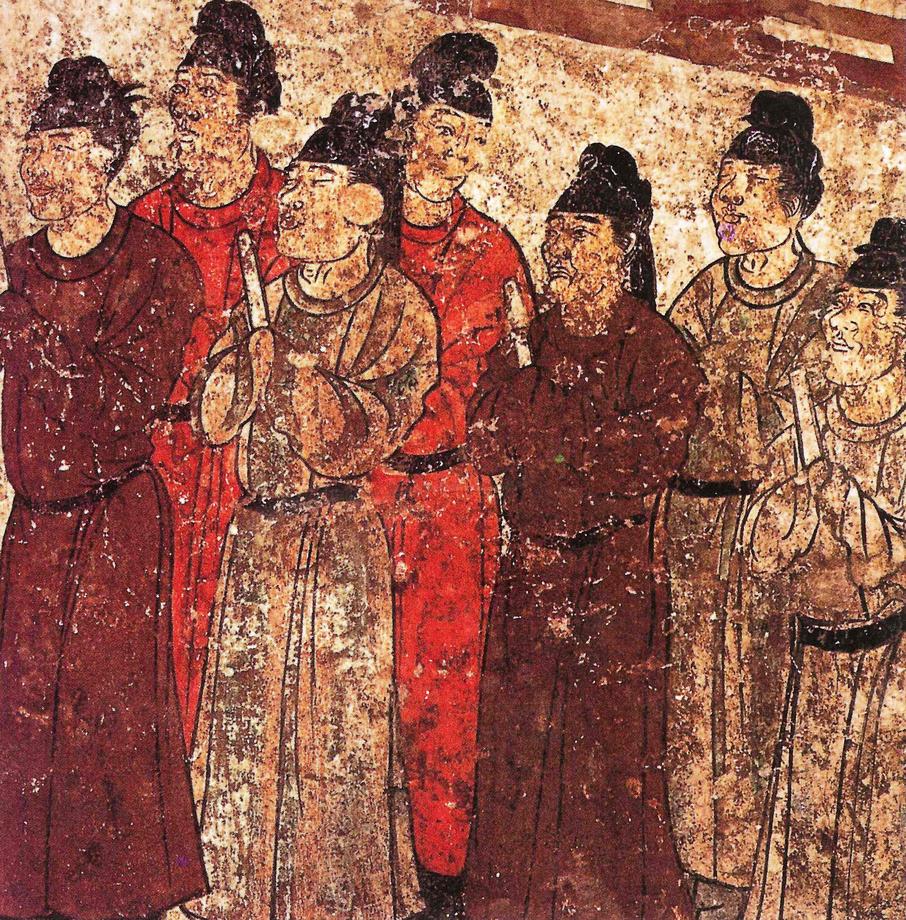
Historical sources on eunuch castration remain limited due to social taboos. Most detailed reports come from outsider observers, medical texts, or rare firsthand descriptions. Visual documentation exists but is scarce and ethically sensitive. Consequently, modern understanding blends documentary evidence with cautious interpretation.
Additional aspects include post-operative care enforcing immobility and preventing infection, use of physical restraints during surgery, and social implications—eunuchs often gained specialized roles or status within their communities.
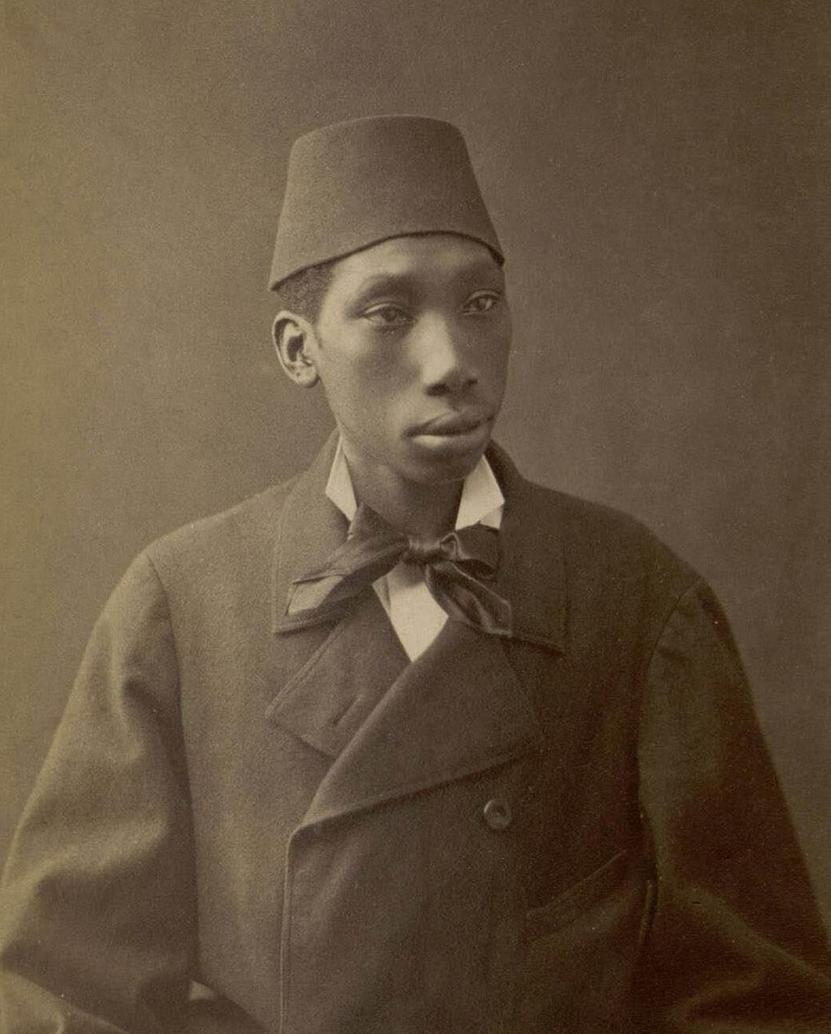
- Castration methods depended on cultural context, purpose, and historical period.
- Complete removal of penis and testicles was the most invasive and demanding procedure.
- Chinese eunuchs underwent a detailed surgical protocol emphasizing bleeding control and wound care.
- Testes-only removal was common and implemented via various techniques including crushing and incision.
- Penis removal without testes was rare and mainly punitive.
- Postoperative care and maintaining urinary function were critical to survival.
- Historical records derive from external observers, limiting detailed internal cultural perspectives.
How Were Eunuchs Castrated? The Complete Inside Story
So, how were eunuchs castrated? In a nutshell: the process varied wildly depending on culture and era, ranging from a swift, clean cut removing all genitalia to more delicate or even injurious methods removing just the testes. The why and how behind these practices are as fascinating as they are complex.

The castration of eunuchs isn’t child’s play—or something societies discussed openly. Much of what we know comes through outsiders’ travel accounts and whispers passed down through history. Sometimes taboo makes facts scarce, but digging deeper reveals remarkable detail.
The Full Monty: Clean-Cut Eunuchs
Let’s start with the boldest and most complete method: removing both the penis and testicles in a single operation.
This was the hallmark of Ottoman black eunuchs and many Chinese eunuchs. Imagine this: the candidate lies down on a kang, a heated bed, probably sweating not from relaxation but dread. Three men hold him firmly in place—one wraps around the waist, two hold down the legs—to keep him from escaping the mortal snip.
Before the cut, tight ligatures or bandages are wrapped around the lower belly and thighs to staunch bleeding—because bleeding too much here is a clear game-over scenario. The area is washed three times with hot pepper-water, which, besides sounding like medieval torture, probably served as a sterilizer and a way to numb or prepare the flesh.
Then, with a small, curved knife—a sickle-shaped blade—the penis and testicles are snipped off in one swift sweep. Imagine the precision. Not haphazard hacking but an experienced, surgical stroke designed to end it cleanly.
To keep the urethra open (otherwise your pee pipe collapses and blocks, leading to a gruesome death), a pewter needle or spigot is inserted into the urethral opening at the stump. The wound is covered carefully, using cold water-soaked paper, then tightly bandaged.
Post-surgery, the poor soul must walk about for two to three hours to encourage healing, but no drinking is allowed for three days! This leads to extreme thirst and agony, worsened by an inability to urinate until the bandages and spigot come off. If the patient can’t urinate then? It’s a death sentence by swelling and blockage.
This detailed method comes directly from G. C. Stent’s account, a rare and morbidly fascinating description. This procedure’s elegance contrasts sharply with the suffering it entails.
The Half House: Testes Removal Only
Not every castration is full-scale demolition. Historically, many cultures opted for simpler removal of testes alone, leaving the penis intact.
- Assyrians, Byzantines, and Italians employed this method. Italian castrati—male singers prized for their high voices—underwent this brutal practice.
- One curious method involved crushing the testes inside the scrotum without cutting the skin—something akin to an internal demolition.
- Others cut open the scrotum carefully to extract the testes, a finicky and delicate job.
- Sometimes, a more livestock-style approach removed the entire scrotum. The castrator tools were often heated to cauterize wounds and prevent infections, rudimentary yet effective.
Why partial castration? Often for specific social or functional roles where losing all genitalia wasn’t necessary or desired.
The Odd One Out: Penis Removed, Testes Left
This is a rarity. Some Islamic eunuchs, often as a form of punishment, had their penis removed but kept their testes. There’s no obvious benefit here—no medical or social services gained—only the harshness of penalty.
A Quick Table Overview
| Type | Method | Usage/Examples |
|---|---|---|
| Clean-cut (penis + testes) | One swift knife sweep removing both; bandaged tightly; pepper-water baths; spigot insertion | Ottoman black eunuchs, Chinese eunuchs |
| Testes only | Crushing inside scrotum; incision and removal; scrotum removal with testes | Assyrians, Byzantines, Italian castrati |
| Penis removed only | Rare punishment; removal of penis leaving testes intact | Some Islamic eunuchs |
Why the Methods Differ
Why such variation? Each society’s view on eunuchs shaped the technique. Some wanted total emasculation for ultimate control; others recognized partial removal sufficed for their purposes, like singing or administrative roles. It also depended on their medical knowledge and rituals.
Moreover, many of these procedures carried immense risk. The fear, pain, and aftercare would make even the bravest hesitate. The outcome often spelled social roles, identity shifts, or merciless punishments.
A Modern Reflection
Today, these practices seem barbaric, even horrifying. Yet, they remind us how power, culture, and medical practices intertwine. We might shudder at the pain, but understanding history helps us appreciate human resilience and societal complexity.
Are you intrigued by how medical knowledge and social demands created such extreme procedures? Would a deeper dive into specific cultural ceremonies around eunuchs be your next curiosity?
For those hungry for more, sources discuss variations in different regions and eras. But handle these stories respectfully—both the historical facts and the human suffering.
In the end, the castration of eunuchs is less a single story and more a web of cultural, medical, and social threads—some sharp, others warm with ritual and meaning.
How was the full castration of eunuchs performed in ancient China?
The procedure involved placing the candidate on a heated bed, restraining him firmly, and tightly binding ligatures around the lower body to control bleeding. The genital area was bathed with hot pepper-water three times, then both penis and testicles were removed in one swift cut with a curved knife. A pewter spigot kept the urethral opening clear as the wound healed.
What measures were taken to prevent excessive bleeding during eunuch castration?
Strong ligatures or bandages were tightly wrapped around the lower belly and upper thighs before the operation. This compressed blood vessels and helped control hemorrhaging during the removal of genitalia.
Why was a spigot or needle inserted into the urethra after castration?
After removing the penis, the urethral opening risked closing or swelling shut. A pewter needle or spigot was inserted to keep the passage open, ensuring the patient could urinate once the wound started healing.
Were eunuchs always fully castrated by removing both penis and testicles?
No, castration methods varied. Some cultures only removed the testicles, either by crushing or cutting, while the penis was left intact. Full removal of genitalia was common in Ottoman and Chinese eunuchs but not universal.
What was unique about the castration practices of Italian castrati?
Italian castrati often had only their testicles removed, either by crushing them inside the scrotum without cutting or by surgically removing them through an incision. The penis was generally preserved to maintain certain functions.
